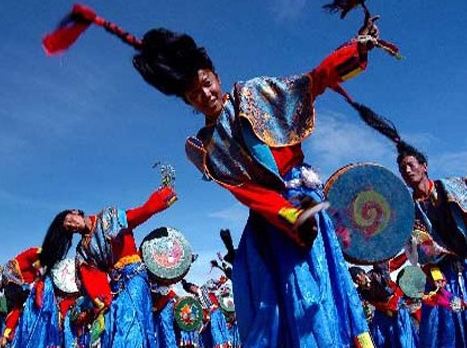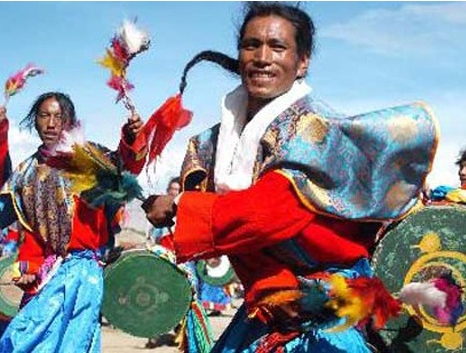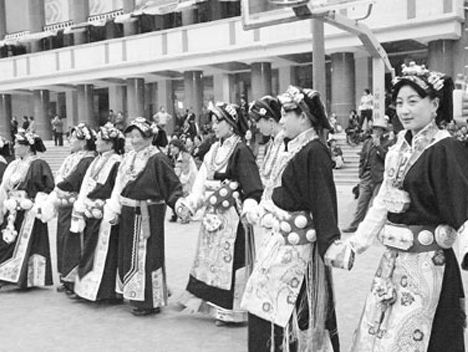
Lhokha Chang Guozhuo dance is a form of drum dance originated in Dabu (present Gyaca) area. "Guozhuang" in Chinese, the "guozhuo" means "circle dance" in Tibetan. As a relatively special art form in traditional Tibetan dance culture, guozhuo dance is one of the oldest dances of various nationalities in the world.
Story has it that in the mid 8th century, the 37th Tibetan King Chisong Dezain was building the first temple of Tibet named Samye Temple on the north bank of Brahmaputra with the help of Padmasambhava and some other Buddhist masters, but the walls that had been built during the day would be destroyed by demons at night. In order to delude the demons, Padmasambhava invited seven zhuoba brothers (guozhuo dancers) from Dabu. Then the guozhuo dance became popular in Lhokha, and most of villages had their dance troupes. Later, the guozhuo dance was introduced to other areas. The story indicates that the Lhokha Chang guozhuo dance has existed for at least 1300 years.

The waist drum in the guozhuo dance has two bands, one tied to the dancer's waist and the other to the root of the dancer's thigh, to fasten the drum vertically on the left of the dancer's waist. Traditionally, the dancers are arranged in a circle with some acting as a're (leading dancers) and the others as zhuoba. There are 2-6 leading dancers in a troupe who do not wear waist drums. They remind the other dancers of changing the order of movements and controlling the dancing tempo. Their movements are strongly rhythmic and the postures are basically the same as, but not as difficult as those of the other dancers. The leading dancers are familiar with movements and order of the whole guozhuo dance, and have abundant performance experience. The other dancers dance to the beats of the drums, and wave their long plaits to patterns like "∞" and "○". Their movements are bold and unconstrained, vigorous and impressive, strongly rhythmic and changeable.

The guozhuo dance can be classified into farmers' guozhuo dance (yuzhuo in Tibetan), herdsmen's guozhuo dance (zhongzhuo in Tibetan) and temple guozhuo dance (quzhuo in Tibetan).





